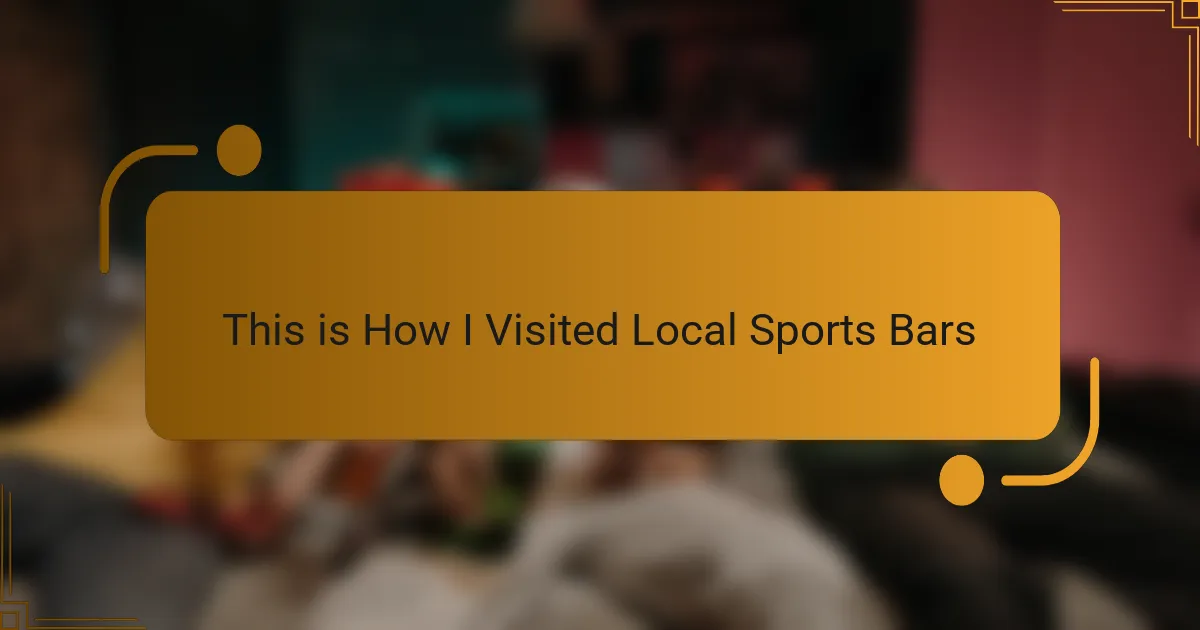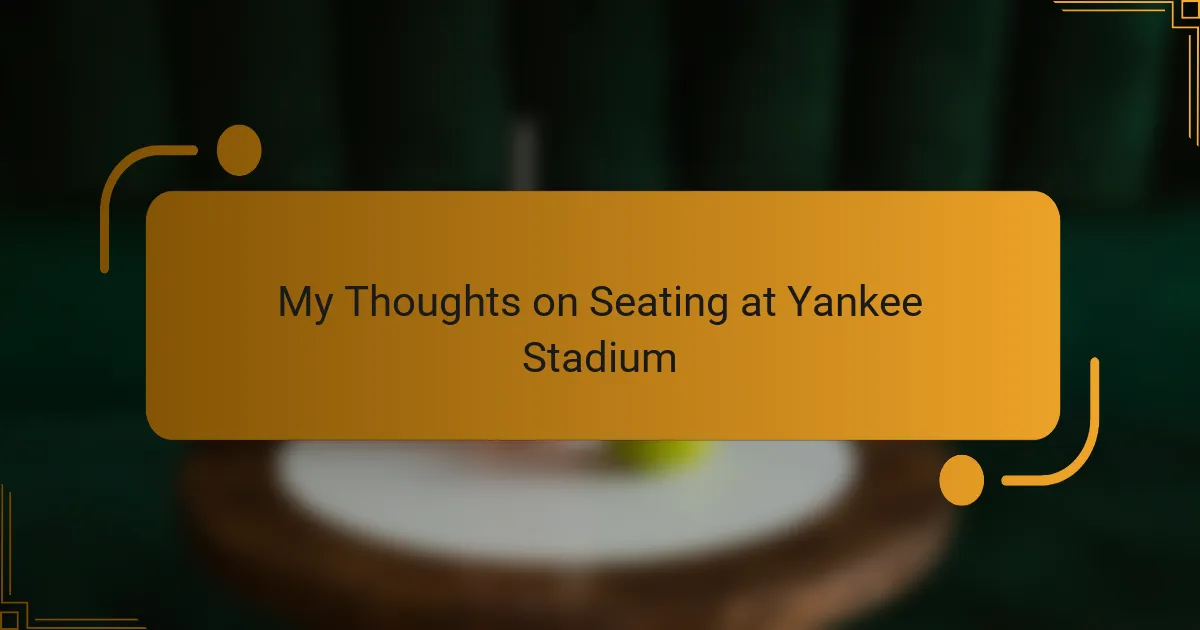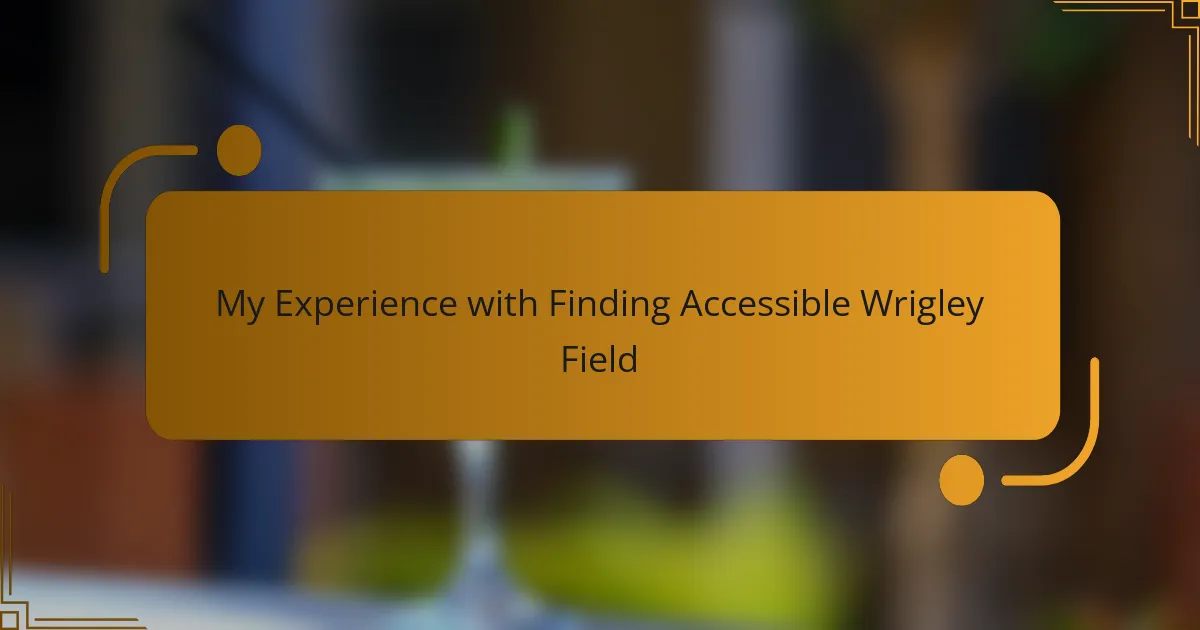Key takeaways
- True accessibility in sports bars involves thoughtful design that accommodates diverse needs, ensuring everyone feels included and comfortable.
- Crucial accessibility features include wide entrances, appropriate seating options, and adequately sized restrooms to prevent discomfort.
- Preparation before visiting, such as checking accessibility details and timing visits during non-peak hours, can enhance the experience significantly.
- Improving aisle widths, offering adjustable seating, and providing clear signage for accessible features can greatly enhance overall guest comfort.
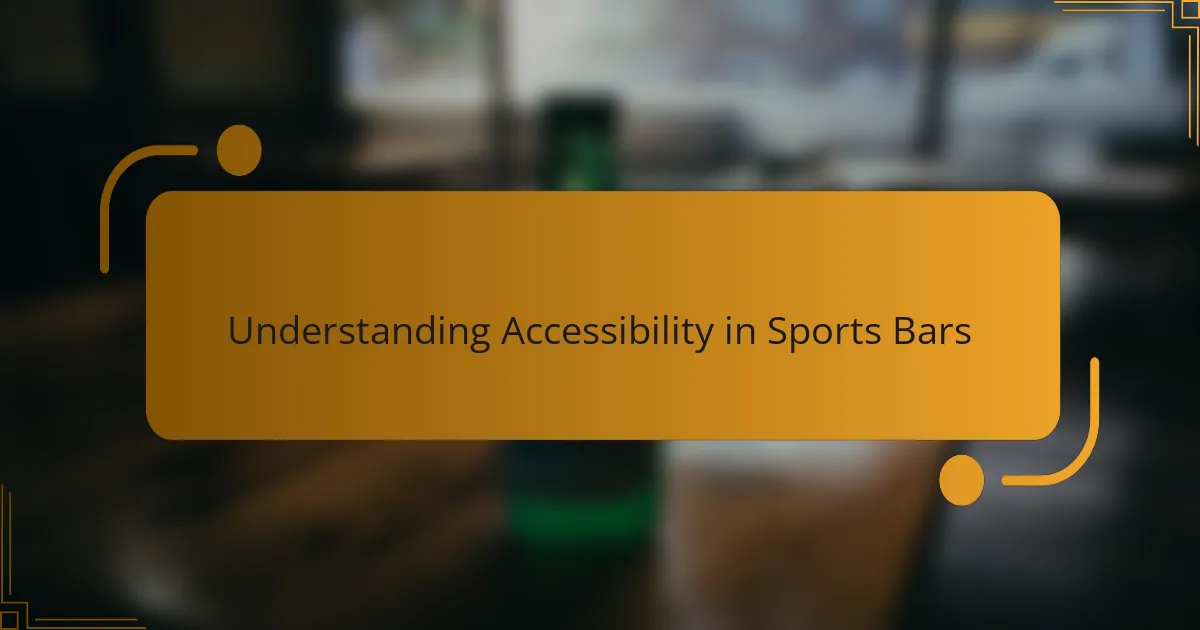
Understanding Accessibility in Sports Bars
Accessibility in sports bars goes beyond just having a ramp at the entrance. I often find myself wondering, can someone with mobility challenges navigate through crowded spaces to find a seat close enough to the screen? It’s not just about physical access but also about feeling comfortably included in the lively atmosphere.
During my visits, I noticed how small details, like the height of bar counters and the spacing between tables, can drastically affect someone’s experience. Have you ever felt awkward because the seating didn’t accommodate your needs? These subtle barriers can make a night out stressful rather than enjoyable.
From my perspective, true accessibility means anticipating these challenges before guests even arrive. It’s about thoughtful design and genuine hospitality—making sure everyone, regardless of ability, can cheer for their team without feeling like an outsider. Isn’t that what a sports bar should be all about?

Key Accessibility Features to Evaluate
When I evaluate accessibility, the first thing I check is the entrance—are ramps and doorways wide and easy to use? It might sound simple, but I’ve seen places where a tiny step or a narrow door makes all the difference between feeling welcomed or locked out. Have you ever hesitated to enter somewhere because you weren’t sure if you could get through comfortably?
Seating options are another critical feature. I often wonder if someone using a wheelchair or scooter can reach a table without having to squeeze between chairs or awkwardly wait for help. It’s those moments when inclusion either shines or falls flat, and I want to see if the bar really thought about different needs.
Then there’s the matter of restrooms—can they accommodate all guests without forcing anyone into an uncomfortable or humiliating situation? I remember walking into a bar where the accessible restroom was so cramped it felt more like a challenge course than a convenience. Isn’t accessibility supposed to make things easier, not add new hurdles?
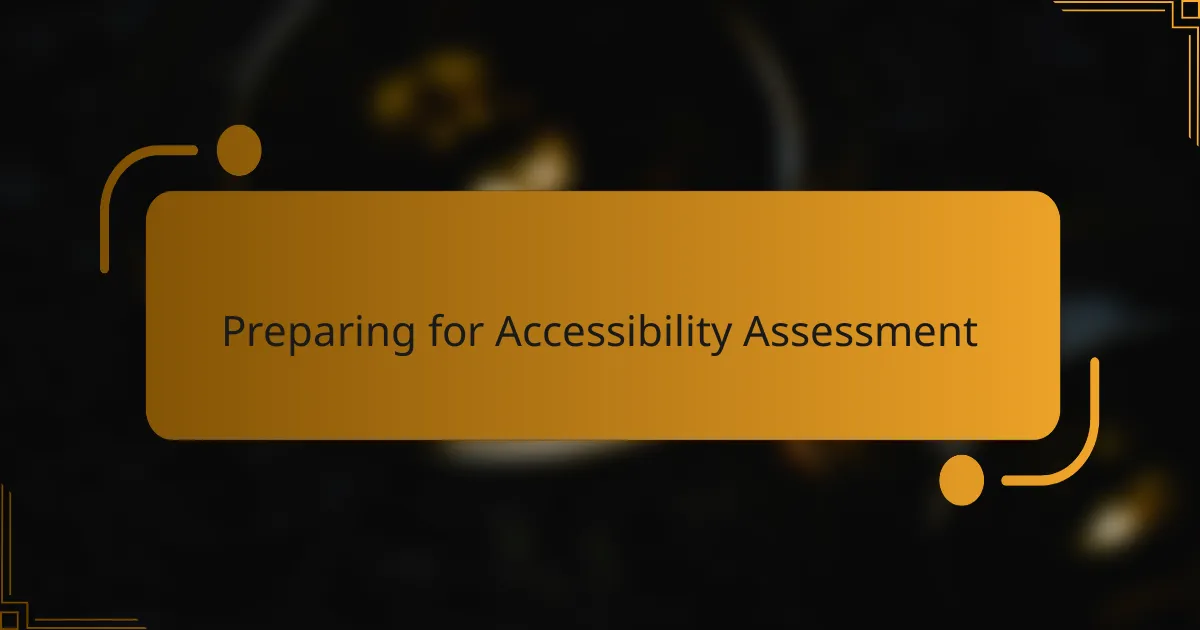
Preparing for Accessibility Assessment
Before stepping into the assessment, I always take a moment to gather information about the venue—menus, layout plans, even photos if I can find them. Knowing what to expect helps me focus my attention on real obstacles rather than surprises, which can be a relief when you’re on the move and eager to settle in.
Sometimes, I prepare a simple checklist tailored to the unique environment of a sports bar. This isn’t about being rigid but about making sure I don’t overlook details like lighting for wayfinding or the placement of TV screens for easy visibility. Have you noticed how tough it can be to spot the game from a certain corner? Those little things matter a lot.
I also think about my own physical and sensory needs as I get ready—it’s easy to forget that accessibility isn’t one-size-fits-all. Taking a moment to imagine how someone with different challenges might experience the space trains my eye to spot issues that aren’t obvious at first glance. Doesn’t it make you wonder how many places claim accessibility but miss the real mark?

My Experience at Buffalo Wild Wings
Walking into Buffalo Wild Wings, I immediately scanned the layout, curious how easy it would be to move around during a busy game night. Navigating through the crowd wasn’t as straightforward as I hoped; the aisles felt narrower than I expected, making me wonder how someone using a wheelchair or a walker would manage. Have you ever felt squeezed in by the buzz of a packed bar, wishing for just a bit more space to relax?
Finding a seat with a clear view of the screens turned out to be a bit of a challenge for me visually, which made me realize how critical seating placement really is. I remember shifting seats twice, trying to catch all the action, which made me think about guests who might not have the mobility to simply move at will. Could more flexible seating arrangements make the experience easier for everyone?
Still, the staff’s attitude stood out to me—they were quick to help and genuinely interested when I asked about accessibility options. That kind of hospitality makes a huge difference, don’t you think? Sometimes, it’s not just the physical features but the people behind the counter who make a place feel welcoming and inclusive.

Practical Accessibility Observations
One practical detail that caught my attention was the height of the bar stools—they seemed designed with only standing guests in mind, making it tough for anyone using a wheelchair to comfortably join the group. Have you ever felt excluded just because the seating didn’t match your needs? It’s those small things that add up and really impact the overall vibe.
The pathway to the restroom also stood out—not because it was far, but because the narrow corridor felt like a tight squeeze during peak hours. I imagined how frustrating it would be to maneuver through that crowd if you had a mobility aid. Doesn’t it make you think about how much crowd flow influences accessibility in real situations?
On a positive note, I noticed that the signage for accessible features was clear and placed at eye level, which isn’t always the case in busy sports bars. That little touch made navigation smoother and felt like a thoughtful welcome. When places get these details right, it shows they’ve gone beyond the basics to truly consider guest comfort.
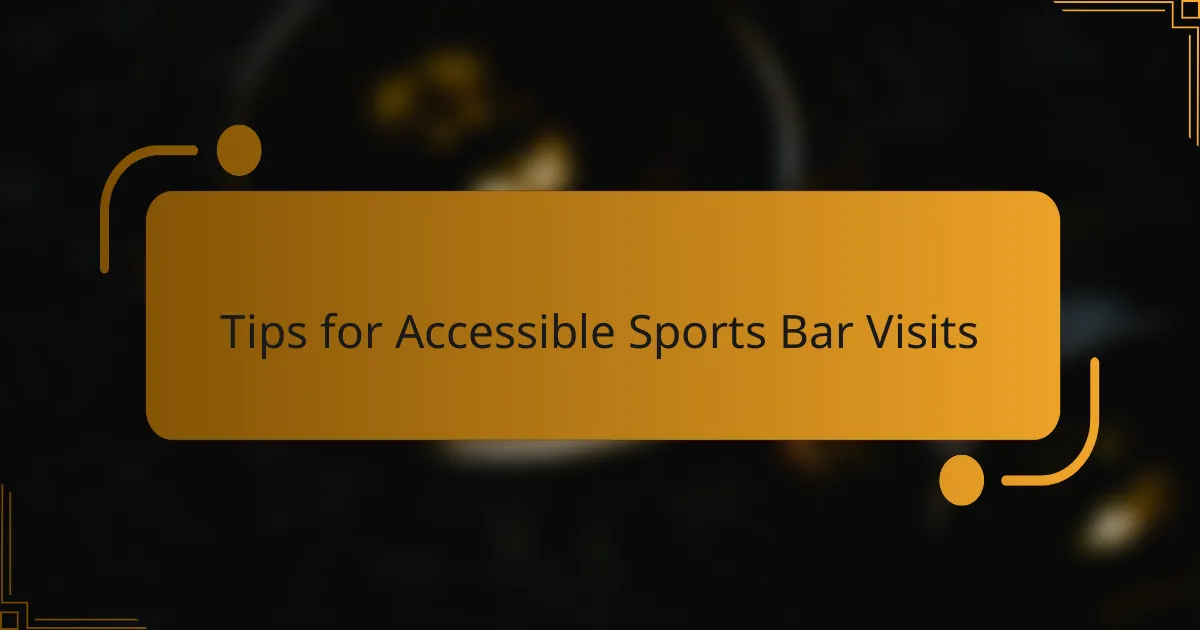
Tips for Accessible Sports Bar Visits
When you plan your visit to a sports bar, I’ve found it helps to call ahead and ask about specific accessibility features like seating options or restroom accommodations. It’s a simple step but can save a lot of hassle—and frankly, it shows whether the staff really understands and prioritizes accessibility.
Another tip I swear by is timing your visit during non-peak hours if possible. From my experience, crowded spaces not only make navigation tougher but can also dampen the whole vibe for someone needing more room to move or settle comfortably. Don’t you think a little elbow room can turn a stressful outing into a truly enjoyable night?
Finally, don’t hesitate to speak up when something doesn’t work for you. I remember one visit where mentioning an awkward table height led the manager to rearrange seating right away. That kind of responsiveness can make a world of difference, and honestly, it encourages venues to keep improving their accessibility for everyone.
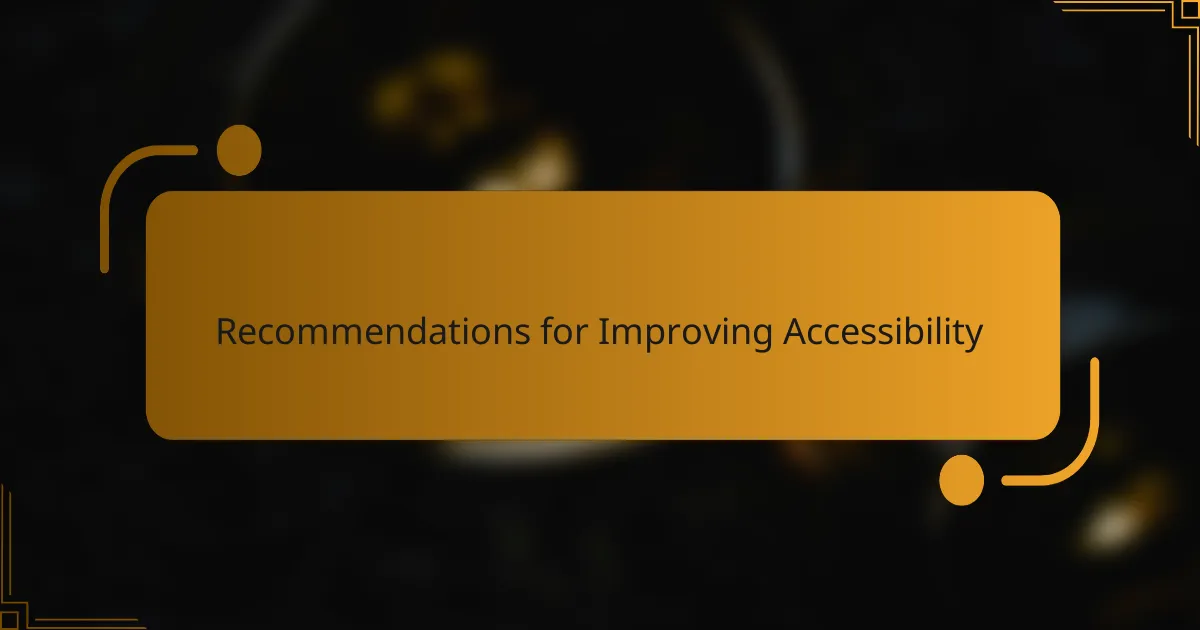
Recommendations for Improving Accessibility
One thing Buffalo Wild Wings could do is widen the aisles between tables to ease navigation during busy games. I’ve been in spots where tight spaces made me anxious about bumping into others or getting stuck, so I bet anyone using a wheelchair would appreciate a little extra breathing room. Don’t you think a bit more space could turn a cramped experience into a comfortable one?
Adjustable seating options would also go a long way. Imagine if some high-top tables included lower sections or if bar counters had spots designed for different heights. I once saw a similar setup at another venue, and it instantly made the group feel more included—no one stood out or struggled to find a comfy seat. Could that kind of flexibility become a standard in sports bars?
Lastly, clearer signage directing guests to accessible restrooms and quiet areas might help reduce stress. During a particularly loud and crowded game, I’ve noticed how tough it can be to locate these spaces quickly, especially for those with sensory sensitivities. What if simple, well-placed signs could ease the challenge and make everyone feel more at home? That small change can really show a commitment to thoughtful accessibility.
